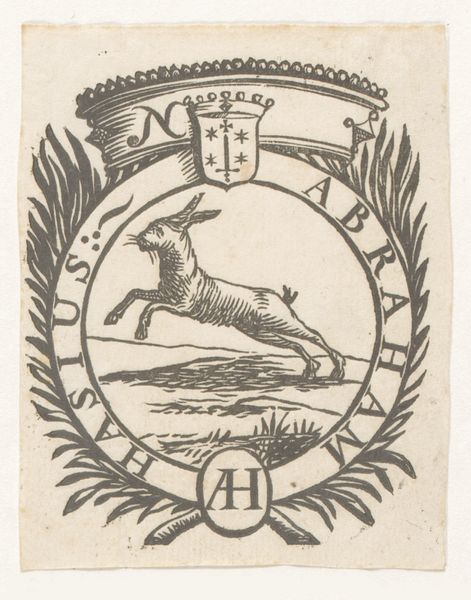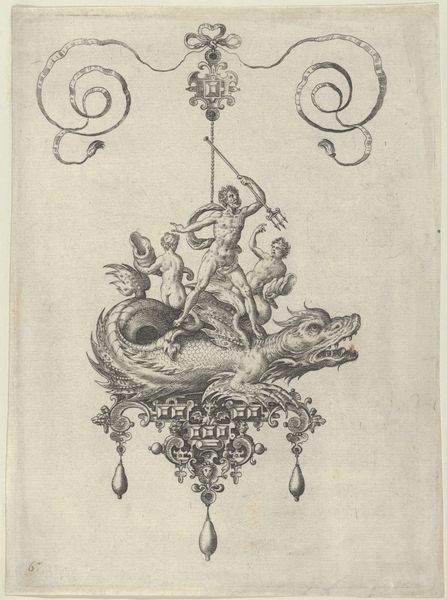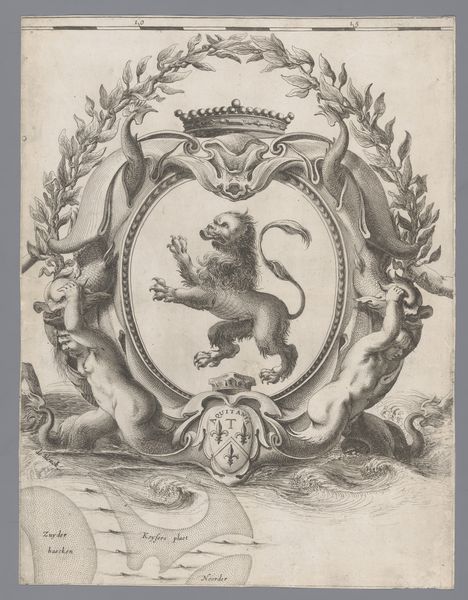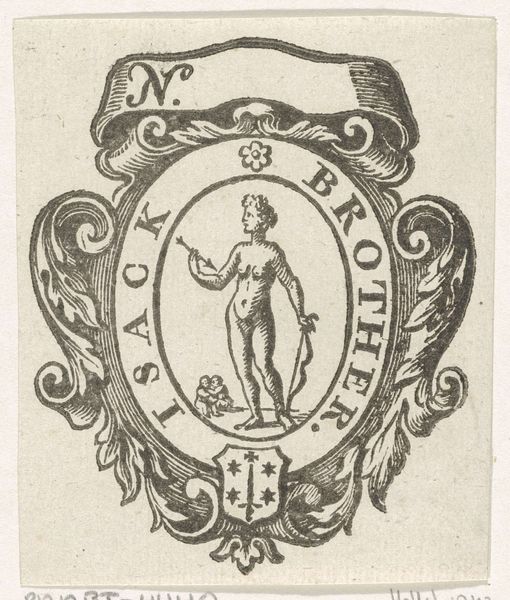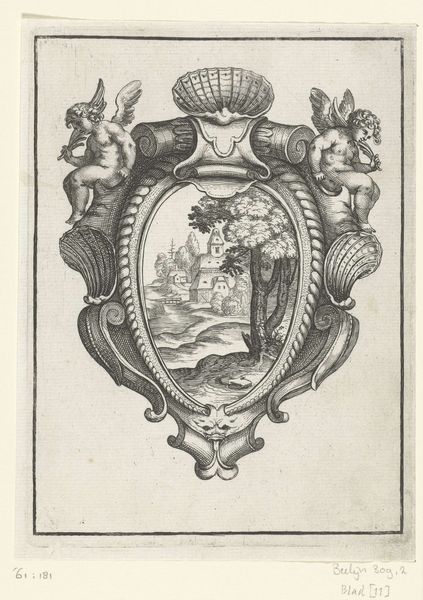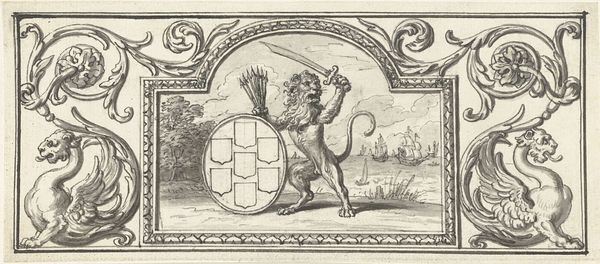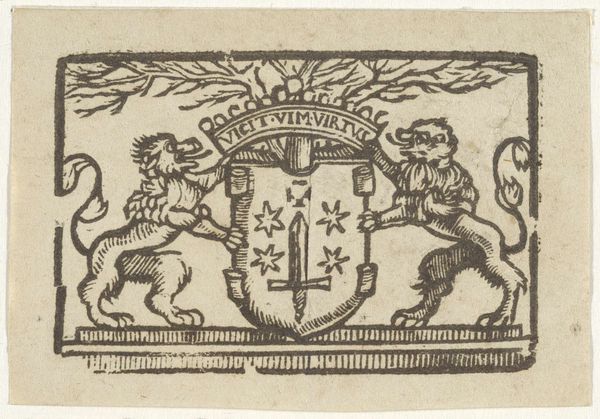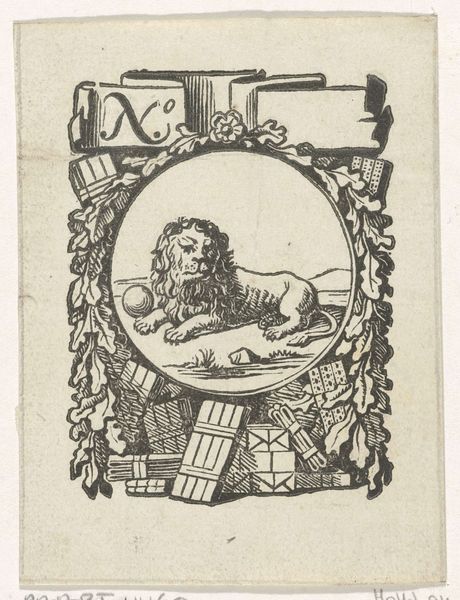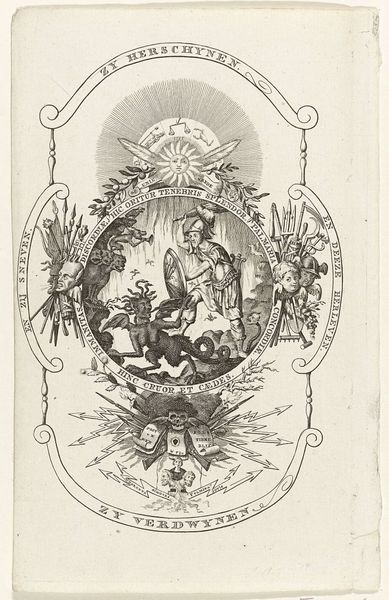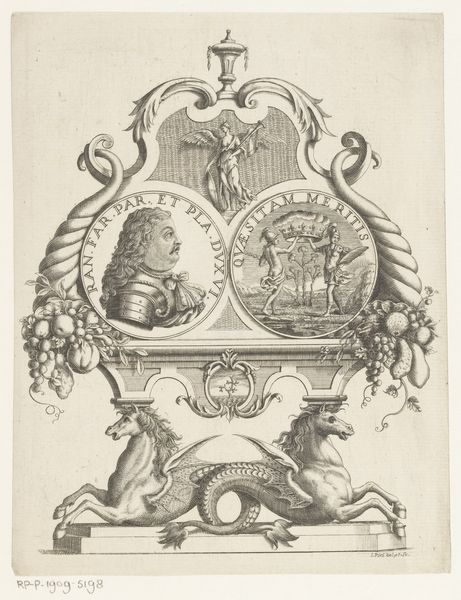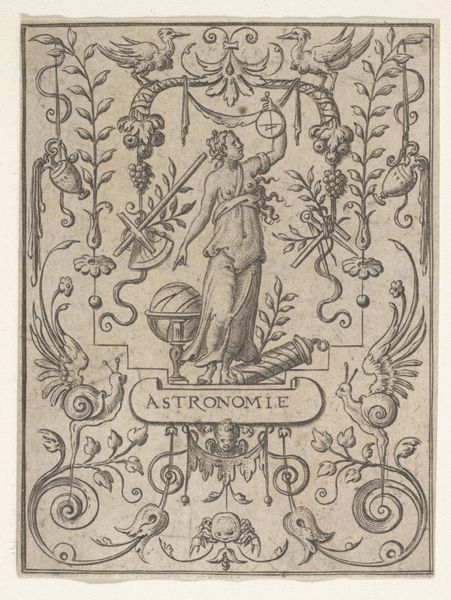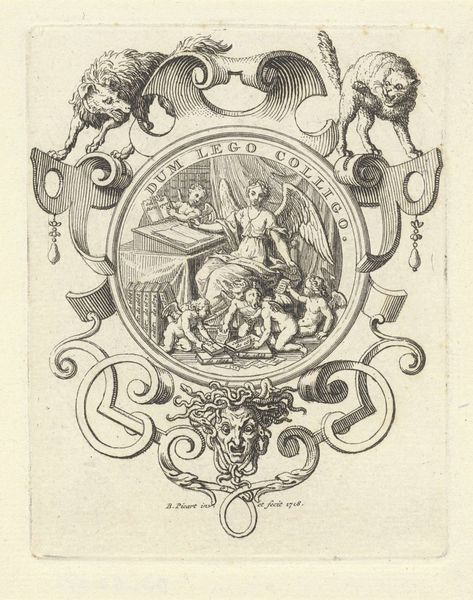
Handelsetiket met de Nederlandse Leeuw met een pijlenbundel en een vrijheidshoed op een lans c. 1681 - 1740
0:00
0:00
print, engraving
#
allegory
#
baroque
# print
#
old engraving style
#
figuration
#
engraving
Dimensions: height 84 mm, width 62 mm
Copyright: Rijks Museum: Open Domain
Curator: Here we have a print dating roughly from 1681 to 1740, attributed to Isaac Vincentsz. van der Vinne. The engraving is titled "Handelsetiket met de Nederlandse Leeuw met een pijlenbundel en een vrijheidshoed op een lans," which translates to "Trade label with the Dutch Lion holding a bundle of arrows and a liberty cap on a lance." Editor: It strikes me as surprisingly forceful for something that would adorn a commercial product. The lion, although somewhat cartoonish, exudes a palpable sense of authority. Curator: The Dutch Lion is a potent symbol, wouldn't you agree? This representation holds both a bundle of arrows, signifying strength through unity, and a liberty cap atop a spear – emblems directly linked to the Dutch Republic's struggle for independence. The piece must have had deep symbolic meaning for consumers and traders of the time. Editor: It is almost Baroque, don't you think? I mean, consider how notions of freedom and trade are being presented here. There is something intrinsically subversive in appropriating those ideals for mercantile purposes; maybe those liberties only went one way. Is this image also telling us something about Dutch economic policy during this era? Curator: Well, such imagery speaks volumes about the values a society projects. Think about who these “handelsetiket” served: presumably members of the wealthy merchant classes during the Golden Age. Its iconography is a conscious articulation of national identity, entwined with commercial activity, but let's not forget how gender, class and race figured into the Dutch political economy during the 17th and 18th centuries. Who benefitted, who didn't? And how did colonialism affect such seemingly simple claims to “liberty”? Editor: Precisely. The political deployment of imagery to shore up ideology and commercial imperatives deserves serious critical reflection, then as now. So I’m seeing now far beyond the imposing lion... Curator: It is the function of this little engraving as both symbolic and utilitarian which continues to make it relevant for us today.
Comments
No comments
Be the first to comment and join the conversation on the ultimate creative platform.
